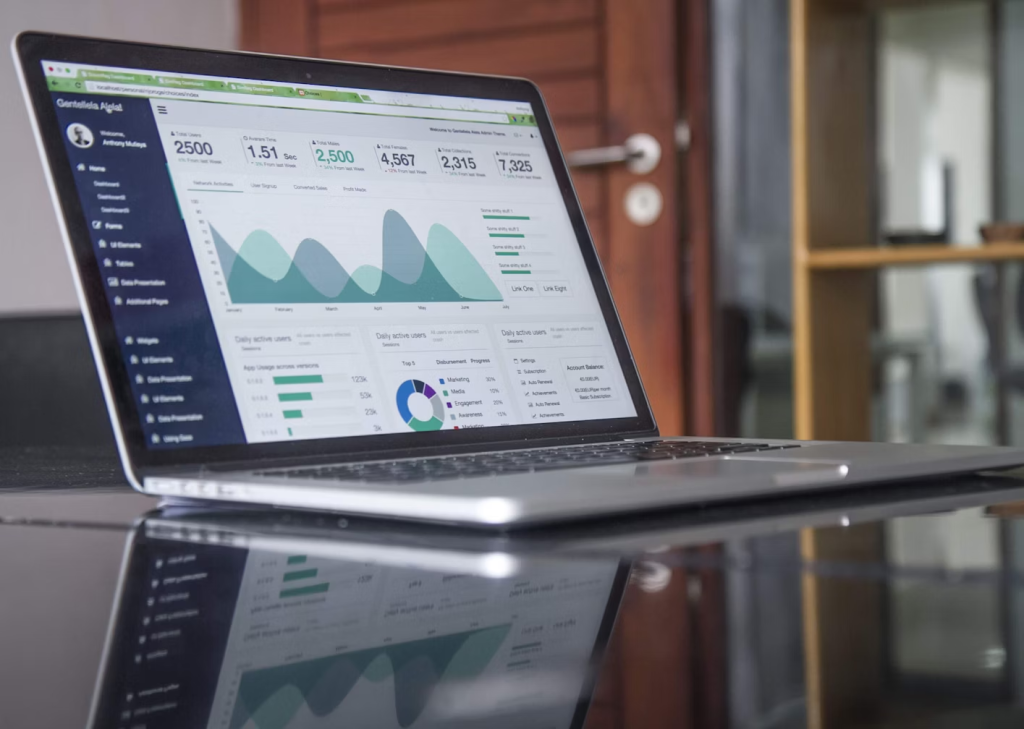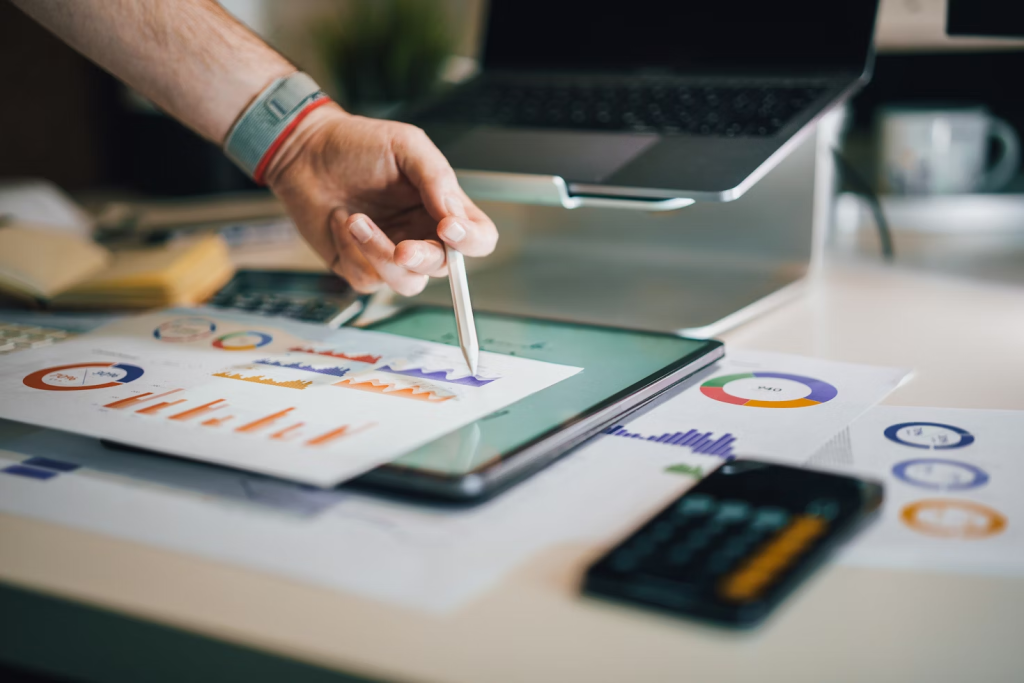
So, you’ve got a killer idea, a passion for making a difference, and maybe even a business plan scribbled on a napkin. You’re ready to take the world by storm. But amidst all the excitement, have you considered how you’ll navigate the twists and turns ahead?
As a new entrepreneur, you constantly face uncertainty. However, forecasting can help you transform that uncertainty into a strategic advantage. By embracing this powerful tool, you can make smarter decisions, build a more resilient business, and ultimately achieve your entrepreneurial dreams.
What is Business Forecasting?
Let’s break this down in a way that makes sense for you, the ambitious entrepreneur. Business forecasting isn’t just about complex algorithms and spreadsheets (though those can be helpful!). At its core, it’s about using information to make educated guesses about your business’s future.
Forecasting is your business’s map, helping you navigate the unknown terrain of market trends, customer behavior, and financial fluctuations.

So, what kind of things can you forecast? Pretty much anything that impacts your business! Here are a few examples:
- Sales: How much of your product or service will you sell in the next quarter or year?
- Expenses: What costs can you expect to incur, like rent, salaries, marketing, and inventory?
- Cash Flow: Will you have enough money coming in to cover your expenses and invest in growth?
- Market Trends: What are your customers interested in? What are your competitors up to? Are there any new technologies or regulations that could affect your business?
The beauty of forecasting is its versatility. You can apply it to virtually any aspect of your business with a measurable impact.
What are the Key Methods of Business Forecasting?
Let’s explore the main tools in your forecasting arsenal, categorized into qualitative (opinion-based) and quantitative (data-driven) methods.
Qualitative Model 1: Market Research
Market research is a valuable qualitative method that taps directly into the minds of your target audience. It allows you to gain insights that shape your product development and marketing strategies by asking potential customers about their wants, needs, and expectations through surveys, focus groups, or one-on-one interviews.

While this method offers a direct line to customer sentiment and uncovers hidden needs, it can be time-consuming, costly, and prone to bias due to small sample sizes.
Qualitative Model 2: the Delphi Method
The Delphi method, another qualitative approach, harnesses the collective wisdom of industry experts. This structured process involves gathering and refining expert opinions through multiple rounds of questionnaires, ultimately reaching a consensus.

It leverages the combined knowledge of specialists, sparking creative insights and reducing individual biases. However, coordinating experts can be challenging, and results might need more specificity.
Quantitative Model 1: the Indicator Approach
The indicator approach is akin to following a trail of economic clues to anticipate future outcomes. You can identify patterns that correlate with your business’s performance by analyzing leading economic indicators like stock market performance, consumer confidence, and unemployment rates.
This relatively simple and cost-effective method provides early warnings of economic shifts, but it might need to be more specific for niche industries and requires expertise for accurate interpretation.
Quantitative Model 2: Econometric Modeling
Econometric modeling is the most sophisticated and potentially accurate forecasting method. It involves constructing statistical models that analyze relationships between various factors impacting your business, such as economic conditions, competitor actions, and marketing investments.
This powerful tool allows for complex “what-if” analysis. It produces highly accurate forecasts but demands specialized knowledge, can be expensive, and may be sensitive to changes in underlying assumptions.
Quantitative Model 3: Time Series Methods
Time series methods offer a practical way to predict future trends by analyzing historical data. By identifying patterns, seasonality, and other trends in your chosen variable (like sales or website traffic) over time, you can extrapolate these patterns into the future using statistical techniques.

Time series methods are relatively easy to implement and suitable for short-term forecasting. Still, they assume past patterns will continue and may not account for external factors like competitor actions or economic shocks.
Why is Business Forecasting Important for New Businesses?
As a new entrepreneur, you’re probably wearing a lot of hats and juggling a million things at once. So why add forecasting to your already overflowing plate? Because forecasting gives you a superpower: the ability to make proactive, informed decisions that can mean the difference between success and failure.

Forecasting isn’t about predicting the future with 100% accuracy. It’s about using the best available information to make the most informed decisions possible. The sooner you start incorporating forecasting into your entrepreneurial toolkit, the better equipped you’ll be to navigate the exciting and sometimes unpredictable journey ahead.
It’s a tool that can give your startup a serious leg up in the entrepreneurial race. Instead of relying solely on intuition or guesswork, you can make decisions based on solid data and insights. Here’s how:
- Strategic Decision-Making
Forecasting empowers you to make data-based decisions, not just gut instinct. It means you can confidently allocate resources, set realistic goals, and pivot your strategy when needed. With a clearer view of the future, you can adapt your business plan as required, seizing new opportunities or navigating unexpected obstacles.

Example: You’re deciding whether to launch a new product line. Forecasting potential sales, costs, and market demand allows you to make a well-informed decision rather than taking a risky gamble.
- Risk Mitigation
Forecasting acts like an early warning system for your startup, alerting you to potential threats and challenges before they become full-blown crises. You can develop contingency plans and avoid being caught off guard by anticipating potential risks (like a supply chain disruption, a competitor’s new product, or a shift in consumer preferences). By predicting potential PR disasters, you can take steps to address issues before they damage your brand’s reputation.
Example: You forecast a potential economic downturn. You can weather the storm and emerge stronger by proactively cutting costs and diversifying your revenue streams.
- Investor Appeal
Investors are looking for something other than a great idea, as they want to see a well-thought-out plan for turning that idea into a profitable business. They are more likely to back a startup with a clear vision for the future. A solid forecast shows investors that you’ve done your research and understand your market.

Example: You’re pitching your startup to venture capitalists. You’re more likely to secure your investment by presenting a detailed financial forecast demonstrating your growth potential and profitability.
- Operational Efficiency
Forecasting isn’t just about big-picture strategy – it can also help you optimize your day-to-day operations. By predicting demand for your products or services, you can optimize inventory levels, staffing, and production schedules, saving you time and money.
Example: You run an online store. By forecasting peak shopping seasons, you can stock up on inventory in advance and hire temporary staff to handle the increased demand.
- Growth Planning
Forecasting can help you spot untapped opportunities, identify new markets, and develop a roadmap for sustainable growth. By projecting your startup’s growth trajectory, you can create a strategic roadmap that guides your decisions and keeps you focused on your long-term goals.
Example: Your forecasting reveals a growing demand for eco-friendly products in your industry. You can then develop a new line of sustainable products to attract environmentally conscious consumers and differentiate yourself from competitors.
Forecasting: Tips for Beginners
Now, don’t let the term “forecasting” intimidate you. You don’t need to be a data scientist or have a Ph.D. in economics to get started. There are simple, accessible methods you can use right away.
Talk to Experts
Connect with mentors, advisors, and industry veterans who deeply understand your market and the challenges you’re likely to face. They can offer invaluable insights, warn you about potential pitfalls, and share strategies that have worked (and haven’t worked) for them.
Be bold, ask questions, pick their brains, and learn from their experiences. After all, their wisdom could be the key to your success.
Survey Your Market
Your customers are the lifeblood of your business, so why not ask them directly what they want and need? Conducting market research through surveys, focus groups, or informal conversations can give you a goldmine of information about their preferences, pain points, and expectations.
This valuable data can help you tailor your products or services, anticipate future demand, and stay ahead of the competition.
Look at the Past
Even if you’re a brand-new startup, you can still learn from the past. If you have some data on your early sales, website traffic, or customer engagement, analyze it to spot trends, patterns, and correlations. Even small amounts of data can reveal valuable insights.

If you don’t have your data yet, don’t worry! Look at industry benchmarks and case studies to see how other businesses in your field have performed. While your startup might be unique, understanding general trends and patterns can help you make more informed predictions about your future.
Start Small
Don’t feel pressured to create complex, multi-year forecasts right away. Start with small, manageable predictions, like estimating your sales for the next quarter or identifying potential risks in your supply chain.
As you gain experience and confidence, you can gradually expand your forecasting efforts to include longer time horizons and more sophisticated methods. Remember, forecasting is a skill that develops over time, so be patient with yourself and celebrate each small victory.
Use Project Management Tools
Project management tools like FuseBase, Monday.com, and Asana can be your best friend when it comes to forecasting. These platforms offer a centralized space to collect, organize, and analyze data from various sources.

For example, the FuseBase platform includes features like:
- Data visualization: Create charts, graphs, and dashboards to spot trends and patterns easily.
- Scenario planning: Model different “what-if” scenarios to see how various factors could impact your business.
- Collaboration tools: Work with your team to gather insights, share ideas, and refine your forecasts.
- Integration with other tools: Connect Fusebase with your CRM, accounting software, or marketing platforms to streamline data collection and analysis.
By leveraging the power of project management tools, forecasting can become a more efficient and collaborative process, freeing up your time and energy to focus on what you do best—growing your business.
Summing Up
As a new entrepreneur, you’re not just building a business; you’re building a future. Forecasting empowers you to take control of that future, to make it less about luck and more about strategic, data-driven decision-making.
The journey of a thousand miles begins with a single step. So, grab your entrepreneurial toolkit and add “forecasting” to your list of essential skills to watch as your startup’s future becomes more transparent, your decisions become more competent, and your success becomes more attainable. Trust us, it’s a game-changer!
